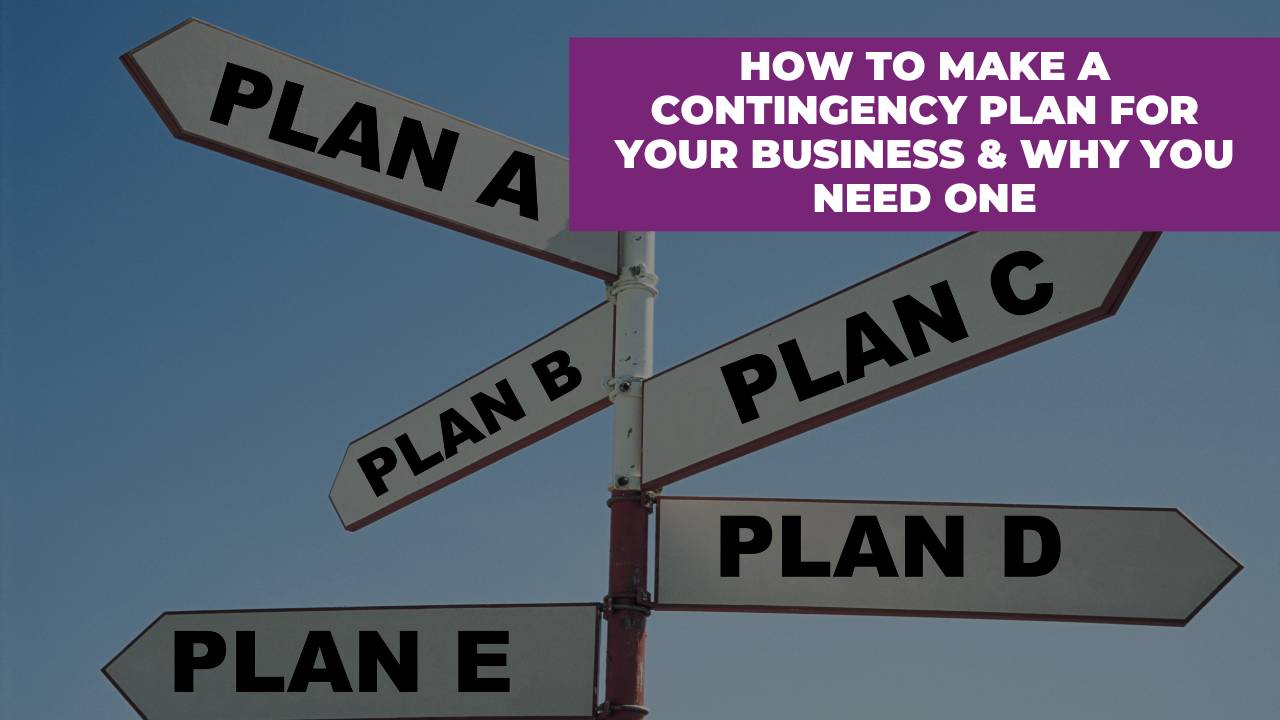How to Make a Contingency Plan for Your Business & Why You Need One
Nov 17, 2023
How to Make a Contingency Plan for Your Business & Why You Need One
You’ve worked hard to build up your business, grow your audience, and stabilize your revenue. Everything’s going well — until it isn’t. Maybe you get sick or have a family emergency. Or maybe you sustain an injury that precludes you from working with your clients for several months.
Can your business survive something like that? Do you have a plan to keep it running, even if you aren’t there?
If you’re not sure, then you don’t have a plan. Or at least, not a comprehensive one. So let’s talk about what it means to build a contingency plan — and why you need one.
Top benefits of a contingency plan
Having a contingency plan is all about preparing for the unexpected. And even though it might not be fun to think about something like an injury or death, creating a contingency plan is a crucial part of running your business. Because you never know what will happen tomorrow.
And it might not even be something bad — having a contingency plan allows you to take an extended vacation or have more flexibility in your schedule. It also makes it easier to transition your business down the road. If you want to have an exit strategy or the opportunity to pass your business along to your children, it’s much easier to do that when you have a contingency plan in place.
When should you start contingency planning?
It’s important to think about contingency planning with a sense of urgency, but you don’t necessarily need to start on the day you open your business. And you might not even need a comprehensive contingency plan for the first few months or years.
But once you have all your business processes and systems in place, then it’s time to start planning for the unexpected. You want to develop a plan that will allow all those systems to keep running without you.
Start with a personal contingency plan
Before you start working on your business contingency plan, make sure you have things taken care of on the personal front. Yes, that means estate planning.
As important as your business is, it’s not as important as you are as a person. So prioritize yourself and your family first. Create your will, get your life insurance in place, and make sure you give someone trustworthy power of attorney. And if you have minor children, make sure you name a guardian and backup guardian.
Create a contingency plan for your business
Once you’ve got your personal estate plan in place, you can start creating a contingency plan for your business. It’s often easier to work in this order because some of the people you may designate in your estate plan (like the person who has power of attorney) might be the same people you would want to run your business in your absence.
Designate and train your second-in-command
In an emergency situation (or a planned absence, like maternity leave), you need to have someone who will run your business in your place. And ideally, you’d like that person to know exactly what to do before that emergency happens.
So figure out who you want as your backup manager (your second-in-command), and train them. Show them how the day-to-day operations work, make sure they know where to find your SOPs, and give them the codes and passwords they need. Make sure that they can step into your role with confidence!
Give your second-in-command access to resources
Your second-in-command doesn’t just need to know how to run the day-to-day operations. They also need the information, resources, and access to support them in those tasks. Here are some of the things your second-in-command might need access to:
- Financial account numbers and passwords
- Credit card account information
- Bookkeeping/accounting programs (and your SOPs for using them)
- Email passwords
- Professional contacts/resource list (vendors, accountants, etc.)
- Other account passwords
- Insurance information
- Safe codes
- Keys to your building
- Your phone’s access code
There might be other things your second-in-command needs. Think through everything you do as you run your business, and make sure you give that person the tools they need to do the same things.
Review and update regularly
Once you’ve created your contingency plan, you can breathe a sigh of relief. But you’re not completely finished — you need to regularly review and update it.
Generally, it’s a good idea to review your contingency plan every year. But you should also take the time to update it whenever anything significantly changes in your business.
So if you open a new studio, hire more people, change your offerings, or make any other significant changes to your business, make sure your contingency plan reflects those changes. (And don’t forget to review the updates with your second-in-command.)
Be proactive — but don’t go overboard
Yes, it’s important to have a contingency plan. And if you don’t have one in place, it’s a good idea to get started sooner rather than later. But you don’t necessarily need to do out and try to get every piece in place tomorrow. That’s the path to stress and burnout.
Instead, take stock. Do you have an estate plan? If not, start there. Maybe set aside a few hours a week for a month to take care of all those personal documents. Then, you can do the same for your business. Give yourself the time you need to do everything correctly without rushing.
If you want more practical advice like this on running your business and getting all your processes in place, join my Inner Circle. This small-group mentoring program puts you in the room with other passionate entrepreneurs and experts who can help you run your business better. Get on the waitlist today!
Lorem ipsum dolor sit amet, consectetur adipiscing elit. Cras sed sapien quam. Sed dapibus est id enim facilisis, at posuere turpis adipiscing. Quisque sit amet dui dui.
Stay connected with news and updates!
Join our mailing list to receive the latest news and updates from our team.
Don't worry, your information will not be shared.
We hate SPAM. We will never sell your information, for any reason.


